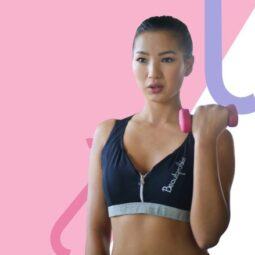
ATH Opinion: Dove Is On a Mission to End Appearance Hate and Toxic Beauty Standards
Diversity is beautiful.
Depression, anxiety, hopelessness, eating disorders, low-self esteem, social phobia, and self-harm among young people have steadily risen in the past decade. It has been determined that toxic beauty standards and social media are among the leading causes. Additionally, teens and young adults feel pressured to look beautiful, not by celebrating their features but by trying hard to fit into unrealistic beauty standards. The media, celebrities, and social media influencers set such standards. Beauty brand Dove’s Real Cost of Beauty campaign determined that appearance hate and body dissatisfaction destroy young lives.
The Harm Of Toxic Beauty Standards

Dove’s research determined that appearance hate and discrimination are a $500 billion dollar health crisis in the United States. Of course, we can expect this figure to be much higher worldwide. Additionally, the brand has a mission to help 250 million teens and young adults build self-confidence and love how they look. Appearance hate is defined as the discriminatory and unjust treatment of people based solely on their physical appearance. Skin color, weight, and hair texture are the qualifying appearance hate factors and why people face discrimination.
The universal beauty standard is someone tall and skinny with delicate facial features, straight hair, preferably blonde, and white skin. For instance, the masses have determined that Barbie and Ken are the beauty standard of what beautiful people are. Any beauty and features that don’t comply with the above standards fall in the “ugly” category. The thing is, Barbie and Ken are dolls with unrealistic proportions and features that no human being can match. We tend to be multicultural of various skin shades, sizes, facial features, and hair textures. On the other hand, body dissatisfaction is defined by a persistent negative attitude toward our physical appearance. In other words, we can’t accept our bodies because we don’t look like the beauty standard.
The Real Cost of Beauty Study Participants
There is a need for multi-level interventions to address harmful beauty ideals in the United States, which cost the economy $305 billion through body dissatisfaction and $501 billion through appearance-based discrimination in 2019.
Dove's The Cost of Beauty Study.
What’s Toxic Beauty and The Dangers

The famous saying that “beauty is in the eye of the beholder,” making beauty subjective, is no longer valid. Why? Because every year, the beauty standards become more narrow and strict. For instance, the popularity of social media has added fuel to the existing problem because it’s universal, and we can help compare each other. As a result, beauty is one of the most popular topics in social media; beauty accounts and beauty influencers are the highest followed. Additionally, as human beings, we all want to fit in and be included, and we tend to follow famous popular people because they are beautiful.
Bullying and beauty standards go hand in hand; we tend to bully people who are not beautiful and do not fit the standards. The emotional and physical harm of toxic beauty are astronomical and have created a pandemic of depression among young people. For example, people die or are severely burned from skin bleach poisoning every day due to the pressure of enjoying the privileges of lighter skin. White skin is the beauty standard and is worth the risk.
How Can We Change Beauty Standards
It is estimated that 45 million people or 16% of the population aged 10 years or older were severely affected by body dissatisfaction in 2019. The prevalence of body dissatisfaction in the US is estimated to be higher than the prevalence of smoking (34 million people).
Dove's Real Cost of Beauty Study.

The lack of representation and diversity in mainstream media, films, magazine covers, influencers, and brand ambassadors is the root of the problem. As long as we refuse to give exposure to real people with various skin tones, hair textures, and body sizes, toxic beauty standards will remain in place. It’s not enough to have representation in a couple of films, tv shows, or magazine covers when we already have preconceived beauty standards. Deep down, we know that the only reason different-looking people are featured is that the media and corporations must meet a quota or face backlash from the public. With cancel culture, diversity has become more visible, not because beauty standards have widened, but because everyone is running scared of being canceled.
Dove is doing a great job with this study; other brands must follow because our youth and future consumers are in trouble. We need to break the barriers to stop raising insecure and self-loathing children. We must stop normalizing plastic surgery and celebrate our beautifully unique features.


